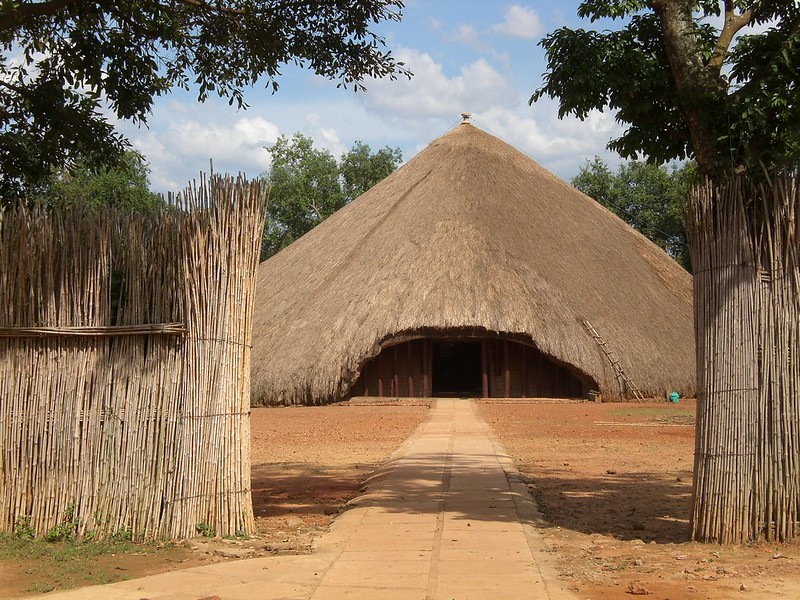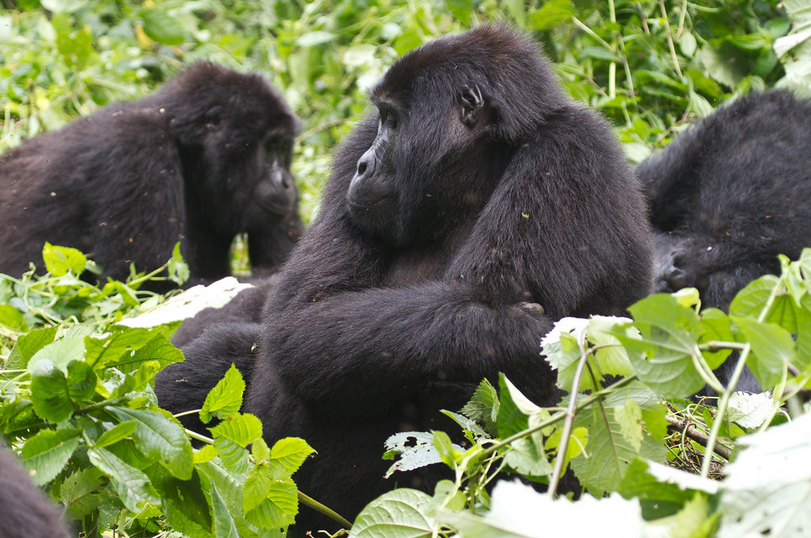Kasubi Tombs ranks | Uganda City Tours
Kasubi Tombs ranks | Uganda City Tours : nestled on Kasubi hill in Buganda kingdom, located in the central region of the country Uganda. They occupy a 27 hectare site that has been used by the Buganda for its Royal Tombs since the 13th century. In addition, it represents the spiritual heart of the Buganda people. The place is the site of the burial grounds for four kings (kabakas) of Buganda and some members of the Buganda royal family. Therefore, the site remains an important spiritual and political site for the Ganda people and also an important example of traditional architecture. The tombs became a UNESCO World Heritage Site in December 2001. It was described as “one of the most remarkable buildings using purely vegetal materials in the entire region of Sub-Saharan Africa. As a result, BBC has ranked Uganda’s Kasubi Tombs as Africa’s NO.1 iconic architectural building.
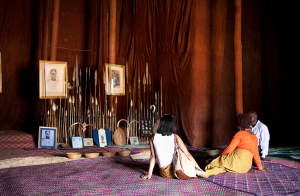
Why Kasubi Tombs ranks
It was predominantly built from wood & other organic materials and the interior is designed to replicate a sacred forest. Additionally, it is topped with 52 circular wings to represent each of the 52 Buganda clans. In fact, most of the site is agricultural farmed by traditional methods. At its core on the hilltop is the former place of the kabakas of the Buganda. This was built in 1882 and converted into the royal burial ground in 1884. Four royal tombs now lie within the “Muzibu-Azaala-Mpanga” meaning “A tough one brings forth powerful ones”. The palace was originally built by Ssekabaka king Suuna II in 1820 and was rebuilt in 1882 by his son Ssekabaka Muteesa I. Therefore, its a major example of an architectural achievement in organic materials, thatch, reed, principally wood, etc.
The thatching of the roofs at Kasubi tombs
The thatching technique at this place is quite unique and can hardly be compared to other African or even a European thatching technique. In addition, the grass is prepared in conical bundles which are simply laid onto the roof structure without being tied. When one of these bundles is rotten, it can simply be pulled out and replaced. This is such an interesting technique and makes the huge maintenance task of the thatched roofs much easier. However, this activity at the tombs is carried out by the members of the Ngeye clan (black and white colobus). In fact, these are the only people allowed to do the work. The thatching skills are passed down from the elders of the clan to younger members during an apprenticeships.
Special customs are observed when fixing the roof for example widows are not allowed to enter the building when it is being thatched. This is because it is believed that their presence would cause leakage. Also pregnant women are also not allowed inside the building during the renovation. In addition, thatcher’s are not supposed to have sexual intercourse during the thatching period. The same custom is observed by the decorators of the poles, who belong to the leopard (Ngo) clan. It a rare shrine where the four Buganda kings were buried. These include; Kabaka Muteesa I, Kabaka Mwanga II, Kabaka Daudi Chwa II and Kabaka Muteesa II. Other members of the royal family buried here include; mothers, grandmothers, princes and princesses. Therefore, acting as the living testimony of the Ganda traditions which attracts both religious and cultural tourists.
Reconstruction of the Kasubi Tombs
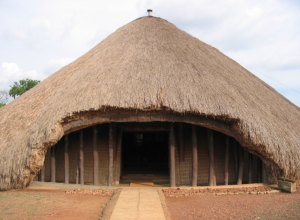
A few major buildings were almost completely destroyed by fire in March 2010 however the cause of this is still under investigation. Consequently, in July 2010, it was included in the list of World Heritage Sites in Danger. The Buganda kingdom has vowed to rebuild the tombs of their Kings and the president of Uganda. HE. Yoweri Kagutta Museveni also said that the national government of Uganda would assist in the restoration of the site. Eventually, the reconstruction of the site started in 2014, funded by the government of Japan. Baganda Kabakas have always built their palaces on hills.
Here, every new king has a right to choose a hill on which to build his palace as well as renaming it. This action was to control the major routes to the palace in order to find easy ways to escape. Just in case of a rebellion and when the Kabakas died, the traditional practice was to bury each Kabaka at a separate site. This was to put up a royal shrine to house his jaw bone which was believed to contain his spirit in the afterlife. At the tombs, there is an area behind a bark cloth curtain known as “Kibira” (a forest). This is where secret ceremonies are conducted and the area where the real Kabaka tombs are built. Historically, Kabaka Muteesa I was the first king to be buried at Kasubi tombs and he was the 35th king in the Buganda kingdom.
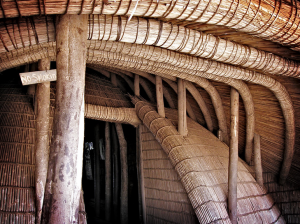
Anthropological dimensions
The physical features of the Kasubi tombs represent only a portion of the traditional life there. The tombs and the whole site environment carry strong spiritual and social significance. Meanwhile, the architecture itself carries meaning related to the Ganda traditions. The rich decorative features, invested with spiritual values reflect the interaction between nature and culture. Apart from the royal burials, a number of traditional rituals are also carried out throughout the year. These include; the new moon ceremony and the consultation of the mediums. However, the main spiritual life is not visible to the ordinary visitor as many ceremonies are performed secretly inside the buildings.
This aspect of the Ganda tradition is well known by the population and it is still respected. The Baganda observe the myths concerning the origins of the death. On the other hand, people believe that every person’s death has a spiritual origin. Here, when a king or a member of the royal family dies, they immediately enthrone a successor after the burial. Afterwards, they perform rituals to appease the spirits. Additionally, animals are sacrificed and gifts of various kinds such as money are deposited in the numerous shrines. The tombs are also visited by a wide range of Baganda medicine men and women who consult the king’s spirits to obtain blessings in their trade.

